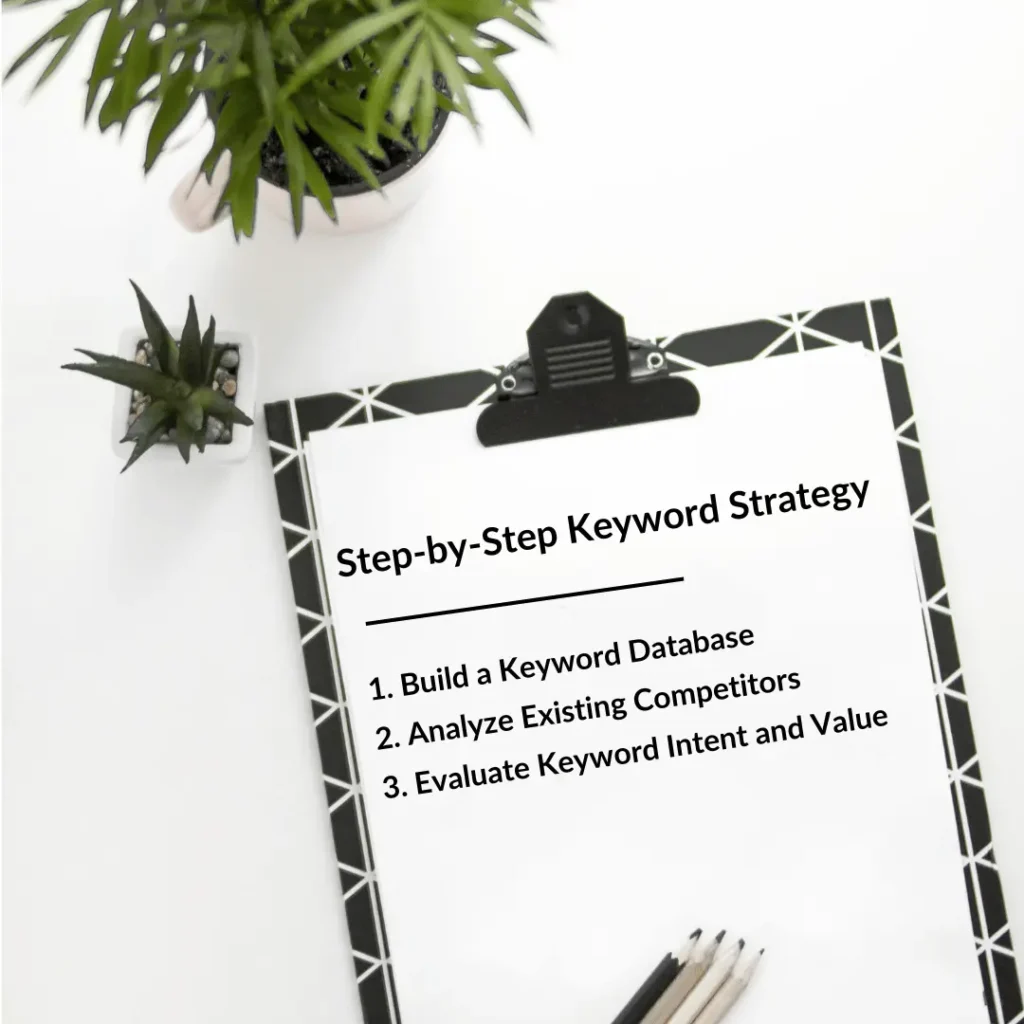Imagine launching your own local business only to find it buried beneath pages of search results. As a small business owner trying to navigate the digital space, I know the struggle of vying for visibility online. I remember when I first started with SEO, it felt like learning a new language – overwhelming yet essential. This guide is designed to simplify that language and show you actionable steps to rank high on Google, using an HVAC business as an example.
Understanding the Basics of SEO
Welcome to the world of SEO, or Search Engine Optimization. It’s a term that gets thrown around a lot, but what does it really mean? And why is it so important? Let’s dive in and unravel the basics.
What is SEO and Why Does it Matter?
SEO is all about enhancing your website’s visibility on search engines like Google. Imagine your website as a needle in a haystack. SEO is the magnet that helps search engines find your needle. It’s crucial because higher visibility means more traffic, and more traffic can lead to more business. Simple, right?
But there’s more to it. SEO isn’t just about getting any traffic; it’s about getting the right traffic. The kind that converts visitors into customers. This is why understanding SEO is essential for anyone looking to make a mark online.
Paid Ads vs. Organic Reach: What’s the Difference?
Now, you might be wondering, why not just pay for ads? Good question. Paid ads can give you instant results. You pay, you get visibility. But there’s a catch. Once you stop paying, your visibility vanishes. It’s like renting a house versus owning one.
On the other hand, organic reach is like owning your home. It takes time and effort to build, but once established, it provides lasting benefits. Combining both paid ads and SEO can maximize your reach on search engine results pages (SERPs). It’s like having your cake and eating it too.
The Role of Keyword Research
Ever heard the phrase “content is king”? Well, in the kingdom of SEO, keywords are the crown jewels. Keyword research is the process of finding and analyzing search terms that people enter into search engines. It’s crucial because it helps you understand what your audience is looking for.
Think of keywords as the bridge between what people are searching for and the content you provide. By understanding the cost-per-click (CPC) of keywords, you can determine their value. High CPC means high competition, but also high potential for conversion.
‘These aren’t just generic SEO tips. These are strategies that work now and will continue to work in the future.’
SEO: The Backbone of Online Visibility
SEO is the backbone of online visibility. It’s complex, yes, but also incredibly rewarding. By mastering keyword research and understanding CPC metrics, you can distinguish between valuable keywords and less impactful ones. This knowledge guides your strategy, ensuring you’re not just visible, but visible to the right people.
So, how do we start? Begin by building a keyword database. Export existing keywords and perform a keyword gap analysis. This will help you identify opportunities and refine your strategy. Remember, SEO is not a one-time task. It’s an ongoing process that requires patience and persistence.
In conclusion, SEO is not just about ranking higher on Google. It’s about understanding your audience, creating valuable content, and building a sustainable online presence. It’s a journey, and like any journey, it starts with a single step. Are you ready to take that step?
Step-by-Step Keyword Strategy
Creating a keyword strategy can feel like mining for gold. You might not see the treasure at first, but trust me, ‘You’re sitting on a gold mine right now.’ Let’s dig into how we can uncover this wealth step by step.
1. Build a Keyword Database
Imagine your keyword database as a treasure map. It guides you to where the gold is hidden. But how do we create this map? We start by collecting data. Use tools like SEM Rush to gather a list of potential keywords. This tool is fantastic for keyword and competitor analysis. It provides insights into what people are searching for and how often.
Once you have your list, it’s time to organize. Group your keywords by themes or topics. This helps in targeting specific areas of your content. Remember, different services or products might need separate pages. Why? Because each page can be optimized for different keywords, maximizing your reach.
2. Analyze Existing Competitors
Think of your competitors as fellow treasure hunters. They might have already found some gold. By analyzing them, you can learn where they struck it rich. Use SEM Rush to see which keywords your competitors rank for. Are there any common trends? Look for keywords that are valuable. How do you know if a keyword is valuable? Check the cost-per-click (CPC). Higher CPC often indicates a keyword with high commercial intent.
But don’t just copy your competitors. Use their data to find gaps. Are there keywords they missed? These could be your hidden gems.
3. Evaluate Keyword Intent and Value
Understanding keyword intent is like knowing why people are searching. Are they looking to buy, learn, or just browse? This intent is crucial. It helps you prioritize content that meets user needs. For instance, if a keyword has a high buying intent, you might want to create a product page. If it’s informational, a blog post could be more suitable.
Evaluating the value of a keyword goes beyond just intent. It’s about understanding the potential return on investment. A keyword with high search volume but low competition can be a gold mine. But remember, volume isn’t everything. Focus on keywords that align with your business goals.
Using SEM Rush for Keyword Analysis
SEM Rush is a powerful tool. It helps in both keyword analysis and competitor research. Start by entering a seed keyword. This could be a term related to your business. SEM Rush will then provide a list of related keywords. Analyze these for search volume, CPC, and competition.
Don’t forget to look at the keyword difficulty score. This tells you how hard it is to rank for a keyword. Aim for a balance between difficulty and volume. Too difficult, and you might not rank. Too easy, and it might not be worth it.
Intent-Driven Keyword Evaluation
When evaluating keywords, always consider the intent behind them. This is where the real magic happens. It’s not just about having data; it’s about making it actionable. Look for common trends in your keyword list. Are there keywords with high intent but low competition? These are your opportunities.
Ask yourself: What is the user looking for when they type this keyword? Are they ready to buy, or are they just gathering information? Tailor your content to match this intent.
In conclusion, building a keyword strategy is like piecing together a puzzle. Each step, from building a database to analyzing competitors and evaluating intent, brings you closer to the treasure. Remember, the goal is not just to rank for keywords but to meet the needs of your audience. By doing so, you’re not just sitting on a gold mine; you’re actively mining it.

Executing a Technical SEO Audit
When it comes to boosting your website’s performance, executing a technical SEO audit is essential. It’s like giving your site a health check-up. But how do we do this effectively? Let me walk you through the process.
1. Conduct Site Audit Using Screaming Frog
Screaming Frog is my go-to tool for technical site audits. Why? Because it offers raw, comprehensive insights into your site’s structure. Imagine it as a magnifying glass, helping you spot every little detail that might be affecting your site’s performance.
To start, you’ll want to crawl your site using Screaming Frog. This tool will scan your website and provide a detailed report on various elements like broken links, duplicate content, and missing metadata. It’s like having a digital detective on your team.
But remember, ‘The real magic happens in how you make this data actionable.’ Once you have the data, it’s time to roll up your sleeves and start making improvements.
2. Identify and Fix Cannibalization Issues
Keyword cannibalization can be a silent killer for your site’s SEO. What is it, you ask? It’s when multiple pages on your site target the same keyword, causing them to compete against each other. This can dilute your site’s authority and confuse search engines.
To identify these issues, use your Screaming Frog report alongside Google Analytics. Look for pages with similar keywords and analyze their performance. Are they competing for the same search terms? If so, it’s time to consolidate or differentiate them.
Fixing cannibalization can lead to better search rankings and a more streamlined user experience. Think of it as decluttering your digital space.
3. Optimize for Both Mobile and Desktop
In today’s world, mobile optimization is not just an option; it’s a necessity. With more users accessing websites via mobile devices, ensuring your site is mobile-friendly is crucial.
Use tools like Google’s Mobile-Friendly Test to check your site’s mobile performance. Screaming Frog can also help by highlighting mobile-specific issues. Once identified, work on improving load times, ensuring responsive design, and optimizing images for mobile.
But don’t forget about desktop users. Your site should perform well across all devices. After all, a seamless experience is what keeps visitors coming back.
Integrating Tools for Comprehensive Insights
While Screaming Frog is powerful, integrating it with other tools like Google Analytics can provide a more comprehensive view of your site’s performance. Google Analytics offers insights into user behavior, traffic sources, and conversion rates.
By linking these tools, you can correlate technical issues with user behavior. For instance, if a page has a high bounce rate, Screaming Frog might reveal technical issues that need addressing.
This integration allows you to make data-driven decisions, ensuring your SEO efforts are both effective and efficient.
Conclusion
Executing a technical SEO audit is not just about finding issues; it’s about making informed decisions to enhance your site’s performance. By using tools like Screaming Frog and integrating them with Google Analytics, you can uncover valuable insights.
Addressing keyword cannibalization and optimizing for both mobile and desktop can significantly improve your site’s search rankings. Remember, the key is to make the data actionable. As we navigate the ever-evolving digital landscape, these steps will help ensure your site remains competitive and user-friendly.
So, are you ready to dive into your next technical SEO audit? With the right tools and strategies, you’ll be well-equipped to tackle any challenges that come your way.
TL;DR: Boost your online visibility with practical SEO strategies for beginners, focusing on keyword selection, content clustering, and technical audits to elevate your business’s search ranking.
click here to follow me on X platform for more information and learn more about SEO 🙂

